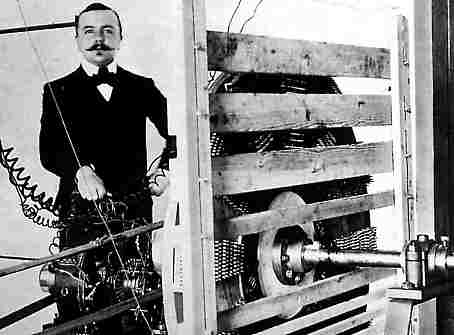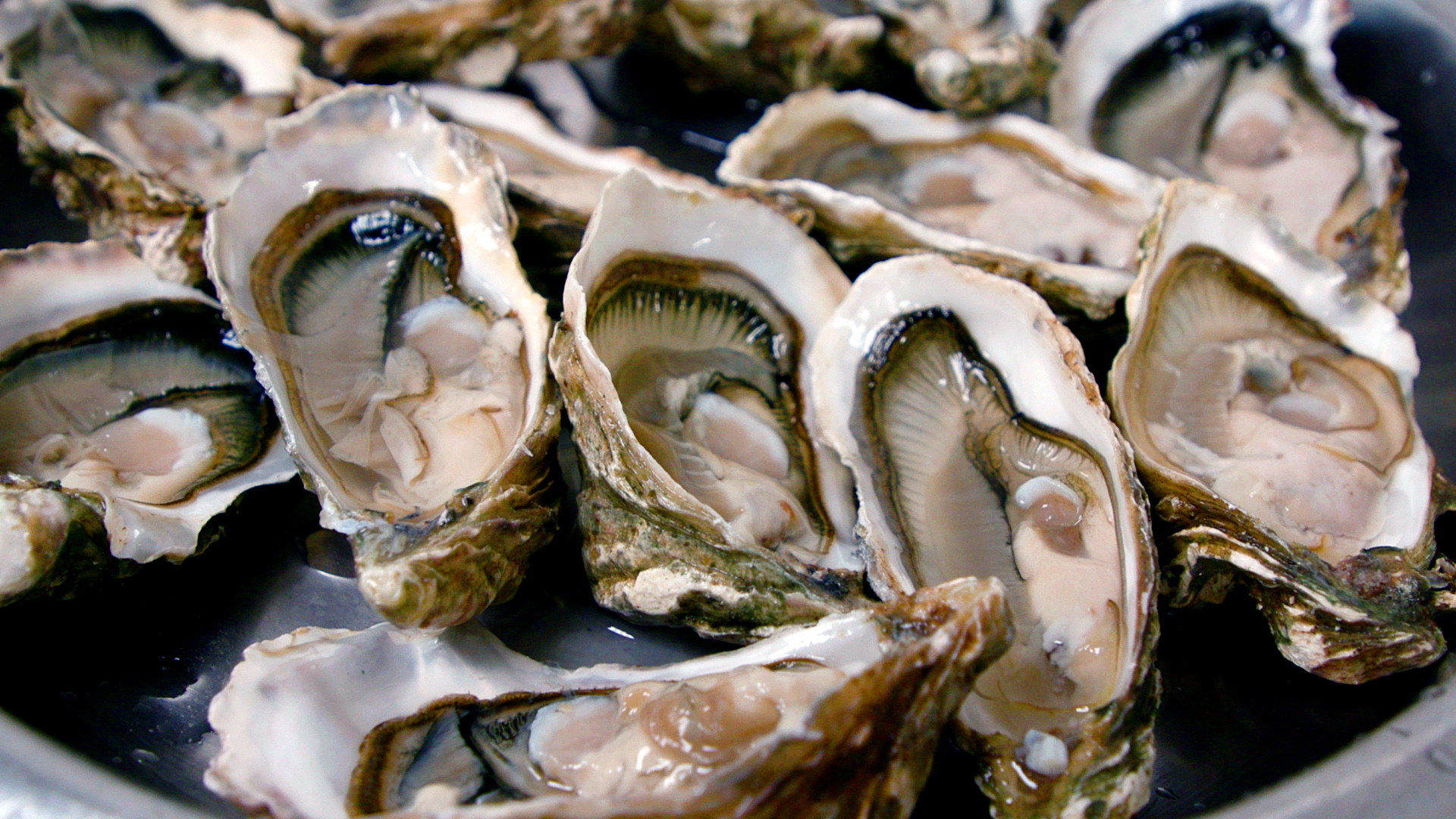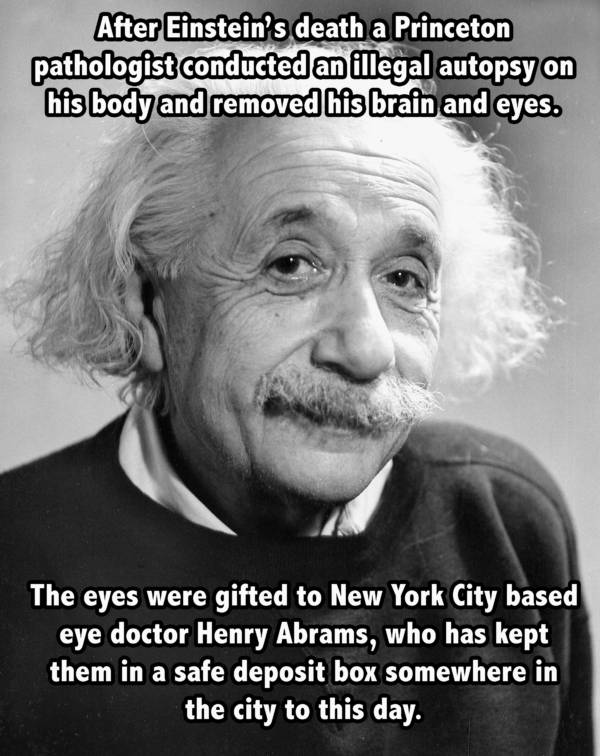Judaism ranks as the second most prevalent religion in New York City, boasting a Jewish community larger than the combined populations of Tel Aviv and Jerusalem. This vibrant metropolis is home to a diverse array of Jewish traditions, including the Hasidic, Modern Orthodox, Conservative, and Reform movements. New York City’s Jewish heritage can be traced […]
When Ozone gas was first identified…
When Ozone gas was first identified in 1840 its harmful effects were not widely understood – it was associated with fresh air and recuperative properties. In 1882, a businessman coined the name Ozone Park (NY) to promote the area’s proximity to “fresh tonic ocean air”.
The post When Ozone gas was first identified… appeared first on Crazy Facts.
Oysters used to be one of the cheapest…
Oysters used to be one of the cheapest and widely available foods in New York City, and crushed oyster shells were even used as mortar to build the city and pave its roads.
The post Oysters used to be one of the cheapest… appeared first on Crazy Facts.
The vast majority of “Push to Walk” buttons….
The vast majority of “Push to Walk” buttons at intersections and “Close Door” buttons in elevators are disabled and only exist to give the illusion of control. In NYC, less than 10% of walk buttons are still even connected to the power grid.
The post The vast majority of “Push to Walk” buttons…. appeared first on Crazy Facts.
Facts Even New Yorkers Don’t Know About New York City
New Yorkers are notorious know-it-alls.
But New York City is more than just the perfect slice of pizza or that subway performer you thought was cool at first but now find kind of annoying.
Sex And The City might not be the best representation of New York City, but we should all feel like Carrie walking around in a tutu every once in a while.
There is so much history in the city. And, there is no way someone knows all of it. But, this is a good place to start.
These are the best New York City facts even the most loyal New Yorkers may not know.
Little Known Facts About New York City
pic.twitter.com/tQe4cuPT4D
— UberFacts (@UberFacts) June 29, 2021
Where does it come from?
Lenape, Rockaway and Canarsie Indians once occupied what is now New York City.
In fact, Manhattan comes from the Munsi language from the Lenni Lenape “Manhatta.” This means the island of many hills. The city might not have any hills now, but it is a way to remember the land that used to be here.
The same, but different.
Houston Street and Houston, Texas are pronounced differently because they are named after different people.
Houston, Texas, pronounced HUe-stun, was named after Sam Houston, the first president of the Republic of Texas and one of the first individuals to represent Texas in the U.S. Senate.
On the other hand, Houston Street, pronounced HOW-stun, was named for William Houstoun. Houstoun’s father-in-law, Nicholas Bayard III, carved up his farmland in what is now SoHo into a grid pattern and named the newly formed streets.
But, it’s been updated.
All the original street names have since changed except for Houstoun, which just lost a “U” somewhere in the mix and became Houston.
And you can say it in different languages.
Some experts believe that there are over 800 languages spoken in New York City. Which makes it one of the most linguistically diverse place in the world.
Makes sense, since people come from all over the world to make this city their home.
It’s a confusing way to tell time.
The giant digital countdown board on the south end of Union Square is pretty much just a clock.
The first seven digits explain what time it is by counting from midnight in military time, to the hundredth of a second. And the last eight digits explain how long until it is midnight again.
Because isn’t that what everyone needs?
There’s a reason why they’re called “islands.”
Coney Island isn’t an Island today, but it once was, thus the name.
The Coney Island Creek once separated the island from mainland Brooklyn but the creek was filled in to create the Belt Parkway before WWII.
Similarly Kips Bay was once a bay even though it’s now just another Manhattan neighborhood. The East River inlet extended into Manhattan just west of what is now First Avenue and filled what is now about 5 city blocks.
The bay became reclaimed land but the name still stuck.
We all know the nickname.
Speaking of names, the Big Apple was once almost the Big Orange.
For more than a year around 1673, NYC was known as the New Orange before the Dutch ceded the land to the British under the Treaty of Westminster.
And the name “The Big Apple” well that comes from 1920s horse racing when the phrase was used to describe the city’s big racing venues.
The name of a traitor?
In Manhattan’s Lower East Side, there’s a plaza named after a Soviet Spy.
Samuel Dickstein Plaza is named after a former New York congressman who was later revealed provided information to the Soviets in exchange for monthly
payments in the late 1930s.
But no one has gotten around to renaming the intersection.
New Yorkers love to read.
The New York Public Library consists of 92 locations with 53 million items. They serve Manhattan, Staten Island and the Bronx. Queens and Brooklyn have their own library system.
The New York Public Library is the second largest library system in the country, following the Library of Congress, and the fourth largest in the world.
The Main Branch has become an iconic building. It was named a National Historical Landmark in 1965, and a New York City Landmark in 1967.
We love pizza.
New York City has the first recognized pizzeria in the country. “Lombardi’s” was the first place to bring the Italian tradition to the U.S. However, they were forced to close in 1984 and re-opened 10 years later, so it is not considered the oldest continuously operated pizzeria in the country.
Now, you can still find quality $1 pizza slices all over the city.
This lead to the Pizza Principle.
New Yorkers are so passionate about pizza that there is a whole economic theory based on it.
The Pizza Principle, or the Pizza-Subway Connection was proposed by native New Yorker Eric M. Bram. In the early 60’s the price of a slice of pizza matched the price of a subway ride.
This continued for years until the MTA decided to discontinue the subway token and Metro Cards became the norm.
At one point people were able to predict a rise in subway fare by the raise in price of a pizza slice. And many argue this principle still holds true.
We all take the subway.
We care about subway fares since approximately 1.6 billion people use the subway every year.
There are 7 numbered lines and 15 letter lines in the New York City subway system. And, the MTA has 6,684 subway cars and 472 stations with the deepest being 191 St in Manhattan,180 feet below street level.
The busiest subway station is Times Square at 42st with 65 million riders. The longest line is the A train from 207th Street in Manhattan to Far Rockaway in Queens.
Finding a U-Haul would be impossible.
Until the 1920s, May 1 was the city wide moving day, everyone’s leases expired on the same day.
Imagine the mayhem!
Living is New York can be chaotic, but learning about it’s history and cultural impact shows how amazing the city truly is.
There is a wire called an eruv…
There is a wire called an eruv that hangs above Manhattan encircling much of the borough, acting as a symbolic boundary that turns the public streets into a private space, much like one’s own home that allows Jewish people to move about freely without having to worry about breaking Jewish law.
The post There is a wire called an eruv… appeared first on Crazy Facts.
There is a wire called an eruv…
There is a wire called an eruv that hangs above Manhattan encircling much of the borough, acting as a symbolic boundary that turns the public streets into a private space, much like one’s own home that allows Jewish people to move about freely without having to worry about breaking Jewish law.
The post There is a wire called an eruv… appeared first on Crazy Facts.
All New Yorkers used to have to move…
All New Yorkers used to have to move on May 1st if their lease expired. It was known as “Moving Day” which led to massive traffic jams.
The post All New Yorkers used to have to move… appeared first on Crazy Facts.
The Brooklyn Dodgers name stems…
The Brooklyn Dodgers name stems from a nickname given in the 1890s to people who, in a matter of life and death, had to evade railcars speeding down the streets. They were known as trolley dodgers. Trolleys were new inventions, which led to two issues. First, cities lacked the safety infrastructure which protects pedestrians today […]
The post The Brooklyn Dodgers name stems… appeared first on Crazy Facts.
Most of the native speakers of the critically…
Most of the native speakers of the critically endangered Germanic language, Gottscheerish, now live in Queens, New York City.
The post Most of the native speakers of the critically… appeared first on Crazy Facts.






